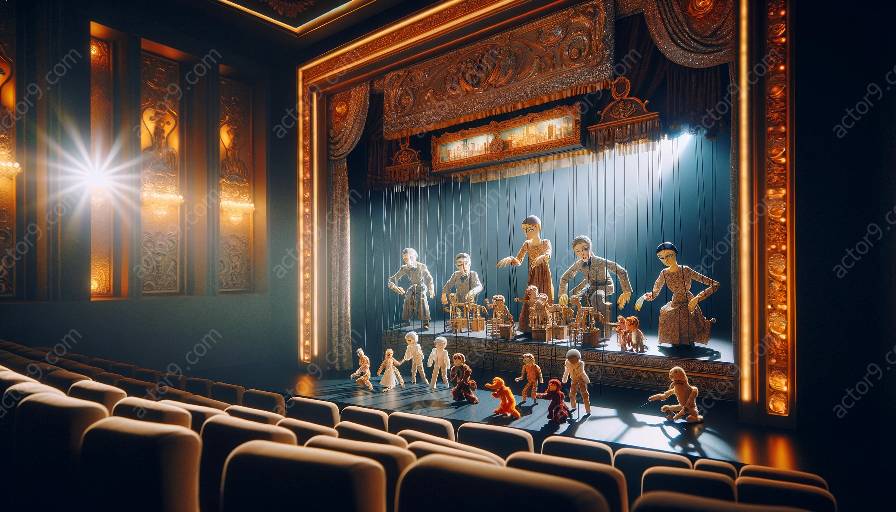When you think of puppetry, the first things that come to mind might be creativity, storytelling, and entertainment. However, the world of puppetry also intersects with sustainability and the environment in numerous ways. In this topic cluster, we will explore how puppetry and sustainability merge, the eco-friendly practices within the puppetry community, and the impact of puppetry on the environment and society.
History of Puppetry: An Overview
To understand the relationship between sustainability, environment, and puppetry, it's essential to delve into the history of puppetry. Puppetry has a rich and diverse history that spans across cultures and civilizations. From ancient forms of puppetry in Asia and Africa to the traditional European marionette shows, the art form has evolved and adapted over centuries.
Evolving Practices
Puppetry has not only adapted in terms of artistic expression but has also evolved in response to societal changes and environmental concerns. As we examine the history of puppetry, it's fascinating to see how environmental themes have been incorporated into performances and how puppeteers have embraced eco-conscious practices.
The Eco-Friendly Practices in Puppetry
One of the most intriguing aspects of sustainability in puppetry is the emphasis on eco-friendly practices. Puppeteers have been at the forefront of utilizing sustainable materials and techniques in their craft. From the use of recycled and biodegradable materials for puppet construction to innovative stage design that minimizes carbon footprint, puppetry has become a pioneer in eco-conscious artistry.
Materials and Construction
Puppet makers have been resourceful in sourcing environmentally friendly materials for creating puppets. This includes utilizing organic fabrics, natural dyes, and recycled elements to minimize waste and environmental impact. Additionally, the focus on durability and reusability in puppet construction aligns with sustainability principles, promoting longevity and reducing the need for frequent replacements.
Stage Design and Productions
Another significant aspect of sustainability in puppetry is the approach to stage design and production sets. Puppet theaters and production companies have been incorporating sustainable practices by using energy-efficient lighting, reusability of set pieces, and minimizing overall waste generation during performances. The commitment to eco-friendly stage design serves as an inspiring example for the broader entertainment industry.
Impact of Puppetry on the Environment and Society
While puppetry embraces sustainable practices internally, its impact extends beyond environmental stewardship. The art form has the potential to educate, inspire, and advocate for environmental awareness and social change.
Education and Awareness
Puppet shows often convey powerful messages about environmental conservation, wildlife preservation, and sustainable living. Through engaging storytelling and visual narratives, puppetry becomes a remarkable tool for educating audiences, especially children, about the importance of environmental protection and responsible stewardship of the planet.
Social Change and Advocacy
Furthermore, puppetry serves as a platform for addressing social and environmental issues, prompting discussions and igniting activism. Puppeteers have utilized their performances to advocate for ecological causes, environmental justice, and community resilience, amplifying their impact on societal consciousness and catalyzing positive change.
Conclusion
In conclusion, the intersection of sustainability, environment, and puppetry offers a captivating insight into the conscientious practices and profound impact of this art form. From historical adaptations to contemporary innovations, the sustainable ethos of puppetry not only embodies eco-friendly principles but also serves as a catalyst for environmental education and social advocacy.
By understanding the intricate relationship between sustainability and puppetry, we can appreciate the transformative potential of art in promoting environmental consciousness and inspiring a greener, more sustainable world.


























